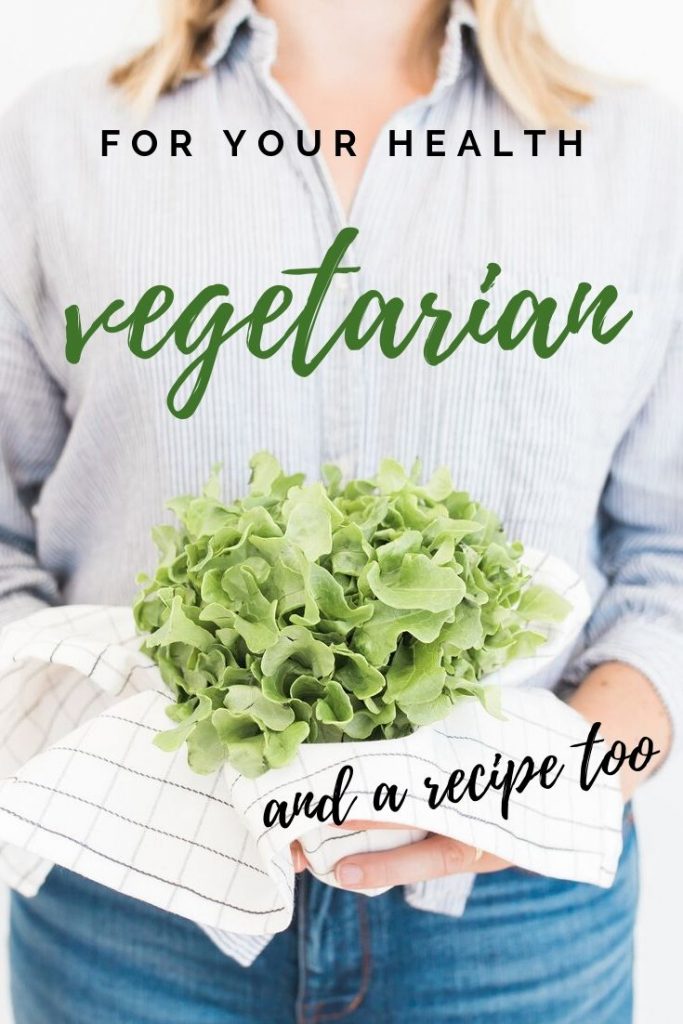You can’t ignore the buzzwords circling around the food industry right now. Plant-based. Vegetarian. Vegan. Organic. All-natural. Sustainably created.
Are you doing it all right?
A new study shows that nearly half of all adults in the US have consumed a plant-based product between April and July 2019. This population is driving an entirely new food system to be created with things like sustainability, animal welfare, and health in mind.
I know from being vegetarian for close to a decade, and vegan for the last five years, that all of these have driven my actions. It may have started out as a reaction from my dad dying at 54 and my daughter declaring herself vegetarian at 3, but it quickly morphed as I did my research and learned what is truly happening to our food supply.
I am currently 54, leading the way for Gen Xers into midlife and beyond. I’m active – I work out several days a week, practice yoga, walk at least 10,000 steps per day.
I don’t write to brag. I don’t tell you all of this to one-up what you’re doing. Instead, I aim to be as healthy as I can as I travel through my 50s, 60s, and beyond, and I hope to share what I’m finding with you.
A vegetarian diet just makes sense. You can’t ignore the facts. If you want a healthy diet, keeping it clean, and adding more veggies and fruits is the way to do it. It helps keep you slim and youthful, and decreases your chances of some of the major diseases our generation is fighting.
Still, I know it’s hard giving up the foods you love. Comfort food that you associate with the best times of your life. That’s why hamburgers can’t seem to go away – who doesn’t enjoy a backyard barbecue with friends?
However, it’s time to choose. Your health or comfort food? A long healthy life, or one where you’re confined to nursing care? While you can’t predict the future, there are ways to put the odds in your favor of being happy and healthy to a ripe old age.
Yes, vegetarian might be the answer. Here’s a way to start.
Eat more veggies
You can be vegetarian and unhealthy. Oreo cookies and french fries are technically vegan. In order to be a healthy vegetarian, it’s important to select a wide variety of vegetables to place into your diet.
If you’ve ever said “I hate veggies,” this is for you. It’s not the veggies you hate, it’s the way they’ve been cooked. Veggies are filled with vitamins, minerals, fiber, phytonutrients, and yes, protein too. You’ll get less sugar in your diet when you add a generous helping of veggies, and cut back on the fat meat and processed foods bring too.
Invest in great cookbooks and learn more about vegetarian
Most meat eaters assume vegetarians eat nothing but salad. Not true. I eat a wide variety of comfort food. I use my crockpot almost daily during the winter months.
The key is in learning how to have your food … with a twist. I eat mac n cheese – I use a homemade cashew sauce that quite simply is to die for.
If you love a particular food, get onto Google and type in the name with “vegan” in front of it. You’ll be surprised at how many recipes you find, and you’ll find something you can whip up that’s healthier for you, yet tastes amazingly good. I love Gaz Oakley’s site – he has quite a few recipes that emulate “homestyle cooking.”
Use soy alternatives
I know there are a lot of jokes about eating Tofurkey for Thanksgiving. Meat eaters would tell you that’s the quickest way to ruin a holiday. While I’m not trying to convince you to eat more Tofurkey, there are a surprising number of alternative products on the marketplace today.
Trader Joes is my jam. I love that place. And their soyrizo, in my opinion, is some of the best alternative meat products you can buy. I use it for a great soyrizo enchilada dish that we make all winter long. TJs also carries a wonderful tempeh product that’s great to mix into all kinds of soups and salads.
While all of these alternative products aren’t the best health wise, they do eliminate a lot of the problems associated with meat. They are a step in the right direction. And that’s what this is all about – taking tiny steps to improve your health. Eat something. Learn more about it. And change your life.
Think for yourself
Don’t follow the rhetoric of everyone around you. If you’re going down this path for your health, it should only be about you. Your choices. Your desire to live a healthy lifestyle. Just ignore what everyone says about your choices – because this is all about you.
I can’t stress that enough, because people have very strong opinions about food choices. This is something you’ll have to consider on your own, and make your own decisions. And that means reading ingredients carefully. Finding advice you can trust. Stop listening to sources that don’t have your best health at heart.
For example, there has been a variety of reports come out recently about plant-based milks causing harmful deficiencies in children. As a parent, that’s terrifying. You want to make the right choices. In part, that’s why you’ve seen a change in the grocery store where things like “almond milk” and “cashew milk” has had to change their names to “beverage” instead.
It all looks very official: the American Academy of Pediatrics is behind this request. But if you dig a little deeper, you’ll discover the real powerhouse behind the change is the dairy industry. They lose market share every time someone makes a switch to an “alternative milk beverage.” And they don’t like it one bit. So they fund studies that of course, side with their way of thinking.
Learn to read labels. Ask questions about the products you purchase. It turns you into a better shopper, and a better eater who cares about what you consume.
Another example comes from a food activist I support. She has one question for American companies today: Why can’t you use the same ingredients and make the same products you sell in other countries around the world? I guarantee you, once you start down this rabbit hole, it makes you question what you put on your table every day.
Think of yourself as vegetarian
This is a game changer. You’ve heard the term “fake it til you make it.” Or the art of affirmations, telling yourself something is true long before you believe it. The mere act of saying you’re a vegetarian can change the way you eat.
By calling yourself a vegetarian, it defines the way you look at food. You look for healthier options, rather than relying on the old standbys. You look for new restaurants. You shop differently at the grocery store.
It’s hard to change to a vegetarian diet overnight. There are many things you’ll have to learn along the way.
But if you want your next few decades to be healthier, to find a way to preserve your youth and feel better every day, you might want to give it a try. I love being vegetarian for all of the benefits it brings.
I promised you a vegetarian recipe – it’s one of my favorites. Pad Thai is my go-to food. I have it at every Thai restaurant we go to.
It took me a long time to find a great vegan recipe. Most are missing something – you know, when you try and make it at home, and you know it’s just not quite right.
But this recipe has it all. I discovered the secret is tamarind paste. That adds the “missing” ingredient that gives it a lot of flavors.
If you have trouble finding tamarind paste, find an Asian grocery store in your community. We have a 99 Ranch in our community, and you can find them in cities across the US. Of course, you can always use Amazon too.
Vegan Pad Thai
Sauce:
½ cup rice vinegar
2/3 cup soy sauce
1/3 cup brown sugar
½ cup vegan worcestershire
½ cup tamarind paste
Pad Thai:
16 oz dried rice noodles
2 tablespoons coconut oil
8 green onions, sliced, plus more for serving
4 red Thai chilies
4 garlic cloves, minced
4 carrots, ribbon peeled
½ cup sprouts
¼ roasted peanuts
16 oz tofu, cooked, cubed
- Soak the rice noodles in warm water 30 minutes before cooking.
- Make the sauce – Over medium-high heat, mix the rice vinegar, soy sauce, sugar, worcestershire, and tamarind paste together. Bring to a boil, then lower to a simmer for 5 minutes. The sauce should be thick and coat your spoon.
- Heat a large cast-iron pan over high heat. Add the coconut oil, green onions, Thai chilies, and garlic, cook for about 2 minutes until the onions are soft. Add the carrots and stir for 1 minute. Add the sprouts and stir until combined.
- Drain rice noodles. Combine with the vegetables and stir until heated through.
- Add the sauce and combine.
- Plate the pad Thai and top with cooked tofu, peanuts, extra green onions, and sprouts if desired.
- Note: You can add in other vegetables too based on your desires. Peppers and bok choy works well too.



+ show Comments
- Hide Comments
add a comment